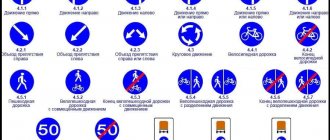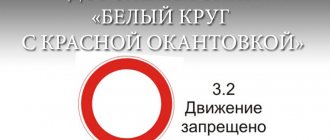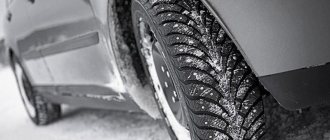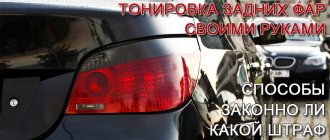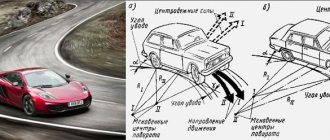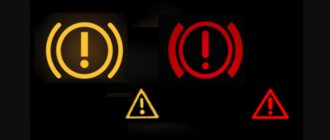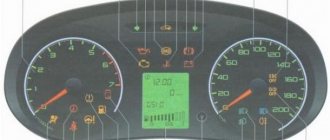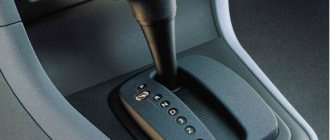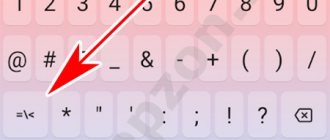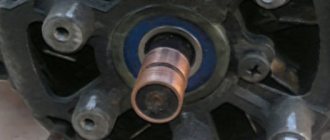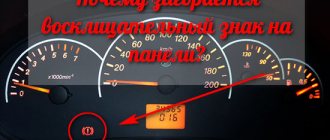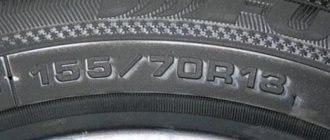The mistakes that drivers make when driving on roads are most often caused by haste. Fearing being late for an important meeting or event, many at some point allow themselves to break the rules.
But violators do not always get away with it. If improper maneuvers do not result in an accident, you may be lucky if you receive a fine or have your license suspended.
Drivers often experience difficulty when planning to make a turn or U-turn. This leads to confusion when choosing a course of action and often leads to maneuvering with violations.
Sign 4.1.1 “Move straight”
Road sign 4.1.1 “Move straight ahead” is used to prohibit turns and U-turns at the nearest intersection of roadways, and to indicate movement only in the forward direction.
The sign is installed directly in front of the intersection (crossroads, exit from the adjacent territory, break in the dividing strip, passage, etc.), to the right of the road.
On narrow roads, it is allowed to install a duplicate sign 4.1.1 on the left side of the road so that it is visible to drivers if for some reason the sign installed on the right side remains unnoticed.
On wide roads, when there are two or more lanes in one direction, the “Go straight” sign is duplicated above the left lane.
To prohibit turning around in breaks in the dividing strip in areas between intersections, sign 4.1.1 is installed on the dividing strip.
Effective area of sign 4.1.1 “Move straight ahead”
The “Go straight ahead” sign installed before the intersection of roadways is valid only for this intersection.
Sign 4.1.1 can be installed at the beginning of a section of the road, for example, immediately after an intersection, to duplicate markings 1.1 (solid) or 1.3 (double solid), separating oncoming traffic flows. With this installation, the sign does not prohibit turning right into courtyards and other areas adjacent to the road on the right.
The effect of the “Go straight ahead” sign installed at the beginning of the road section extends to the next nearest intersection.
Sign 4.1.1 does not apply to route vehicles.
Reversals and turns in the same sign
2.6 “River to oncoming traffic” and 2.7 “Target of oncoming traffic”
2.6 and 2.7 do not regulate the order of turns or U-turns, these are priority signs that indicate on a narrow section of the road who should give way to whom. They are extremely rare, but nevertheless they must be followed.
Sign 2.6 - “Right of way for oncoming traffic”
Easy to remember: a sign in a red circle usually indicates that something is prohibited. If you see him, stop to let oncoming cars pass.
The driver may well stop and check the meaning of the sign in the directory. This is not prohibited by traffic rules; moreover, a decision made in haste can greatly worsen the situation on the road and cause an accident, which will definitely cause more harm.
Sign 2.7 - “Take advantage of oncoming traffic”
If it's blue, the road is yours.
Sign 4.1.2 “Move to the right”
Road sign 4.1.2 “Move to the right” is used to indicate the direction of movement at the nearest intersection of roadways only to the right.
On wide roads the “Move to the right” sign is duplicated. Duplicate sign 4.1.2 is installed above the left lane, on roads with a dividing strip - on the dividing strip, and on narrow roads without a dividing strip - on the left side of the road.
The coverage area of sign 4.1.2 “Move to the right” extends to the intersection of roadways in front of which the sign is installed (to the first intersection behind the sign).
Sign 4.1.2 does not apply to route vehicles.
Why is it important to follow the signs?
When performing maneuvers, the driver must understand that any change in the trajectory of movement can cause an emergency if other road users are not informed of their intentions.
Everything that a driver must know to ensure safety when driving on roads is described in the traffic rules. Without knowing these rules, it is easy to get into an accident as soon as you get on the road. One of the driver's responsibilities is to study road signs. Knowing what they mean and how to act when they are present, you can increase the safety of your own actions when driving on the roads.
Attention! It is important to know not only what each sign means, but also what their coverage area is.
Each group of elements has a specific zone within which the sign’s instructions must be followed. In the area where this or that sign is in effect, the driver must comply with the requirements of the technical element used to organize traffic. Without them, it is not particularly clear whether it is possible to turn, perform U-turns and other maneuvers.
Sign 4.1.4 “Move straight or right”
Road sign 4.1.4 “Move straight or to the right” is used to indicate the direction of movement at the nearest intersection of roadways only straight or to the right.
On wide roads the “Go straight or right” sign is duplicated. Duplicate sign 4.1.4 is installed above the left lane, on roads with a dividing strip - on the dividing strip, and on narrow roads without a dividing strip - on the left side of the road.
The coverage area of sign 4.1.4 “Moving straight or to the right” extends to the intersection of roadways in front of which the sign is installed (to the first intersection behind the sign).
Sign 4.1.4 does not apply to route vehicles.
Rules in accordance with traffic regulations
The rules that must be observed when turning and turning vehicles are outlined in paragraph 8 of the traffic rules: The driver of the vehicle must take the most comfortable position on the roadway in advance:
- If you want to turn the vehicle to the left, you must take the extreme left position in the lane.
- If there are tram rails on the road for driving cars, you can perform a maneuver from them - subject to certain conditions. There should be no signs prohibiting this type of maneuvering. When making a turn or U-turn using tram tracks, a car must not interfere with the tram.
- Before making a left turn, position the car so that it does not enter the lane intended for traffic in the oncoming direction.
- If the driver of a large vehicle is turning, there may be a deviation from the rules due to the size of the car, if this does not violate safety measures for other road users.
When performing the maneuver, the following features should be taken into account:
- Turns and U-turns should be made only in the absence of prohibiting elements or marking lines that prohibit such actions.
- If there are dividing strips, the driver can choose the far or near territory accessible for traffic; driving between them is also permissible.
- The driver must ensure that the car does not end up in the oncoming lane.
Fines for violating regulatory signs 4.1.1-4.1.6
The size of the fine for mandatory signs will depend not only on the fact of the violation itself, but also on the consequences to which this violation will lead. For example, by violating the requirement of the sign and turning “wrong”, you can drive towards the traffic. And for this violation there are already serious sanctions.
For failure to comply with the requirements of mandatory signs indicating the proper direction of movement (for the very fact of violation), sanctions will be imposed on the driver in the form of a warning or a fine of 500 rubles. under Part 1 of Article 12.16 of the Administrative Code.
For turning left or making a U-turn in violation of the requirements prescribed by road signs, a fine of 1000-1500 rubles will be imposed under Part 2 of Article 12.16 of the Administrative Code.
But if turning in violation of the instructional sign leads to the car driving towards the traffic, this action will be regarded as moving in the opposite direction (Article 12.16 part 3 of the Administrative Code - a fine of 5,000 rubles or deprivation of rights for up to six months). A repeated violation will result in deprivation of rights for 1 year or a fine of 5,000 rubles.
A complete list of mandatory road signs with brief comments (explanations) on the website is available in Appendix 1 of the Traffic Regulations.
Navigation through the series of articles<< Mandatory road signs Mandatory road signs 4.2 - 4.3 >>
What happens if the driver does not give way?
If the driver, when making a U-turn or making a left turn, does not give way to the car that has the right of way, the punishment will be determined according to Article 12.1 of the Code of Administrative Offenses (Part 2). The motorist is charged with violating the rules of passage at an intersection and is given a fine of 1,000 rubles. If the actions are qualified as a violation of the rules of maneuvering, the punishment is determined according to Art. 12.14 Code of Administrative Offenses (Part 3). The punishment may be a fine of 500 rubles or a warning.
Prohibiting varieties
Outwardly, it is very simple to distinguish them - a circle with a red border on a white or blue background, which is quite difficult not to notice. This is a very large group that regulates literally all aspects of road traffic, starting from the maximum permissible speed, restrictions on the weight and types of vehicles, and ending with the ban on entry, parking and stopping of cars on various sections of the road.
It is important not only to confidently imagine what prohibitory signs look like and what exactly they prohibit, but also to understand exactly on which sections of the roadway they operate, that is, to imagine the area of effect of the sign. Let's first figure out where the zone of action of the prohibiting species begins.
Regarding the lanes to which it applies, everything is also quite simple - prohibitory signs only apply to one side of the road, where they are installed.
Of course, there are exceptions to any rule. So, for example, the “Parking is prohibited” type, established at the entrance to the yard, does not apply to persons living in the house or working in an organization located here, if a detour is not provided. There are other exceptions related to the action of this sign, which will be discussed below.
Sign No parking
This road symbol can be found very often - a blue circle with a red border, crossed diagonally by one red stripe. It is clear that it prohibits parking of vehicles on any day of the week.
But sometimes you can find it prohibiting parking, for example, only on odd days, or even days - on them one or two white stripes (vertical) are drawn inside a crossed out circle. Accordingly, one lane is crossed out - you cannot park a car only on odd days, two - on even days.
However, there are restrictions here too - the ban is valid only until the evening - until 19.00, so in order not to break the rules, before 21.00 the vehicle must be driven to the other side of the road - as a rule, a sign with a reverse restriction is installed on it.
Well, in the period from 19.00 to 21.00 you can park your car in the coverage area of any sign - you will not break the rules. It should also be noted that there are categories of people who can safely ignore the “Parking Prohibited” symbol.
We will not describe in detail the rules for federal postal vehicles, for which this type does not apply - this is not relevant for us. It is much more important that cars of disabled people of groups I and II and persons transporting such disabled people can park under this graphic element without fear.
No parking or stopping sign
This type, so to speak, is closely related to the road sign we described above. The fact is that where stopping is prohibited, parking is also prohibited, but not vice versa.
You can stop in a “No Parking” zone and you won’t be fined. Let's take a brief look at how a parking lot differs from a stop.
There are no difficulties here, since this issue is covered in some detail in the traffic rules. Understanding the differences between parking and stopping is very simple.
But if at the same time you perform actions related to boarding/disembarking passengers, loading/unloading a car, then regardless of how much time it takes you, you will make a stop, not a parking lot, even if it lasts at least 15 minutes, at least a whole hour.
Externally, “Parking and stopping is prohibited” is very similar to the prohibitory type we described above, only it is no longer one diagonal red stripe on a blue background, but two intersecting stripes.
Read also: The third cylinder of the Priora does not work
It also applies only to its own lane. Exceptions to which this symbol does not apply include only route vehicles. Please note that disabled people in their vehicles can no longer stop in the coverage area of this element, unless, of course, a corresponding information sign is installed under it.
Area of operation of the “No parking” sign
In general, its coverage area is the same as that of other prohibitory images, that is, from the installation site to the first intersection, or to the end of the populated area, if no other symbols are installed that remove the restriction.
However, there are nuances:
- Firstly, the zone can be defined by a yellow broken marking line at the edge of the roadway: as long as it is there, parking is prohibited, and with the end of this line, the sign’s coverage area ends.
- Secondly, at the beginning of the article it was not for nothing that we briefly mentioned other road types, in particular, signs used in conjunction with other types to clarify the action of the latter.
Thus, the coverage area signs (vertical arrows on a white rectangle), located under the sign, precisely determine its coverage area.
Thus, if under the graphic element “Parking Prohibited” you see an arrow pointing down, this means the end of the sign’s coverage area - it will be possible to leave a vehicle behind it, unless, of course, other traffic rules are violated. If the sign indicates an arrow pointing upward, this means that the coverage area will begin from the location where the sign is installed, but you can also usually see a number indicating the length of the coverage area in meters.
The direction of movement to which the sign applies is also important. A regular blue circle crossed out with a red stripe, like any other prohibiting type, only applies to the side of the road where it is installed. At the same time, remember also about the “Parking Restricted Zone” view, which is a large white rectangle with a “No Parking” sign drawn inside it - it already applies to the entire roadway.
The parking ban is also canceled by the “End of all restrictions zone” pictogram - a white circle with black stripes crossing it out. By the way, there is a similar sign for the above-mentioned “Parking Restriction Zone”.
Penalty for parking a vehicle in a “No Parking” zone
The Code of Administrative Offenses states that ignoring requirements of this type provides for a fine of 1,500 rubles. And if the offense was committed in Moscow or St. Petersburg, then the fine will already amount to 3,000 rubles.
In addition, the car can easily be sent to a penalty area. In order to receive a fine for illegal stopping or parking, by the way, it is not at all necessary to stop in the area covered by the relevant signs.
If you happen to, for example, leave your car closer than five meters to a pedestrian crossing or on it itself, then you will be given the same fines.
Compatibility with other types
We mentioned above that “No parking” can be installed in conjunction with information signs.
They are divided into a couple of groups:
- Indicating the type of vehicle for which parking is prohibited. These can be motorcycles, trucks, trucks with trailers, route vehicles, etc.
- Coverage area signs. These are vertical arrows on a white background that can point up, down, or both ways. They indicate the direction of the zone in which the sign is valid. Sometimes the sign additionally indicates the distance of the coverage area in meters.
To protect yourself from monetary losses caused by exorbitant fines and costs of “rescuing” a car from a parking lot, do not neglect the parking rules determined by the corresponding information symbols on the road, markings, etc.
After all, failure to comply with these requirements can cause accidents on the road, numerous casualties, and simply create traffic jams that get on your nerves when driving through a densely populated city. Therefore, do not break the rules, leave your car in the parking lot only in permitted places.
When driving a vehicle, it is imperative to know the prescribed traffic rules and follow them. To make it easier for drivers to navigate one-way roads, 5.5 traffic control signs will be installed everywhere in 2022.
If you know all their symbols and strictly follow them, there will be no confusion on the road.
List of suitable markup elements
- The “Go straight ahead” sign is a prescriptive sign and has the shape of a blue circle with a white arrow in the center. It gives the car owner permission to drive only straight and not turn anywhere. To some extent, this designation is prohibitive, since if it is present, the driver is prohibited from moving in another direction - only straight ahead. This road sign can be installed along with a configuration of arrows that correspond to all the necessary directions that exist at a particular intersection.
This marking element has a number of features that depend on the location of its installation:
- the presence of such an element at an intersection limits its effect only on those roadways to which it belongs;
- When this marking element is located outside the intersection, its effect continues only to the nearest road intersection. In this case, the vehicle is allowed to enter the adjacent territories;
- The installation of a sign can be carried out in places where the dividing strip breaks to establish a ban on cars turning to the left or making a U-turn;
- This sign does not apply to route vehicles.
If you violate these rules, you can not only run into a fine, but also make a turn onto a road on which you can only travel in one direction. And this can already lead to more serious consequences in the form of an accident and deprivation of rights.
- The Right Turn sign is also a mandatory safety graphic and is shaped like a blue circle with a white arrow in the center indicating a right turn. This prescriptive designation allows the vehicle to travel exclusively in the direction that corresponds to the arrow on the sign. It has prohibitive characteristics, because if this sign is present, the driver is prohibited from driving straight, turning left and making a U-turn. This prescriptive road element can often be seen at the exit from parking areas, gas stations, and on roads with a large number of lanes (4 or more). Its action continues until the first intersection.
- The “Move straight and right” sign looks like a blue circle containing an arrow with a forked end. One part of the arrow points straight ahead, and the other part points to the right. This means that travel can continue in any of those directions indicated by the prescriptive road safety element. Turning in the opposite direction or performing a U-turn maneuver is strictly prohibited. The sign continues until the first intersection, after which you can make any maneuver in the absence of other prohibiting or prescriptive signs.
- The sign “Avoid obstacles on the right” indicates that if there is an obstacle ahead, you must turn right. Obstacles may be temporary or in the form of islands of safety. A similar designation with two oblique arrows allows turning both right and left, but not straight.
Is it possible to pay a fine online?
In case of real punishment, paying a mandatory traffic fine via the Internet is now also possible and quite simple. The whole procedure will take a few minutes - there is no need to manually enter details or print out a payment receipt. The entire algorithm includes the following list of documents:
- Driver's license.
- Car registration certificate.
- Resolution imposing a fine.
You can even transfer funds online using bank cards of any Russian banks (Visa, Mastercard and even Mir).
Directly on the State Services portal, you can independently check and pay fines for traffic violations, including turning right. This is where the most complete information about such incidents is collected. You only need to indicate in the search form the number of your license and vehicle registration number in order to receive data on fines imposed by the traffic police and for incorrect parking.
End of validity of the sign
A road that is restricted to one-way traffic only will have its own defined boundaries. If the beginning of such a section should be indicated by sign 5.5, then when the effect of the road sign ends, another one, sign 5.6, should be installed, which marks the end of the road with traffic in one direction.
Such a sign is a sign of a special instruction, just like the one that informs about the start of movement in one direction. And in appearance it will be the same as sign 5.5, but with the image of a crossed out arrow. And it will mean that from the place where it is installed, one-way traffic ends and normal, two-way traffic begins.
Therefore, along with it there must be another sign indicating the beginning of movement in both directions. This is a triangular sign, framed in red, with two black arrows pointing in different directions, on a white background. It should not be installed in places where a one-way road ends at an intersection.
You are allowed to continue driving:
| 1. | ? | Only along trajectory A. |
| 2. | ? | Only along trajectory B. |
| 3. | ? | Along trajectories A and B. |
| 4. | ? | Along trajectories B and C. |
| 5. | ? | Along any trajectory from those indicated. |
You can continue moving only along trajectory B, since by turning along trajectory A, you will not comply with the requirement to move as close as possible to the right edge of the roadway, and continuing further movement along the lane for route vehicles along trajectory B is prohibited.
How much does a violation cost?
The amount of punishment for committing actions that violate traffic rules in the part that is regulated by the graphic elements described above cannot be immediately determined. It is necessary to understand the nature of the violation, then it will be clear what fine the violator faces.
- If the requirements established by the road sign are violated, the driver will be fined in the amount of 500 rubles. A clear example of such a violation is a situation in which a car drives out of a yard onto an unmarked road with two lanes and turns left, although the sign only allows right turns.
- Making a turn in the opposite direction, which contradicts the rule depicted by the road safety element, will entail a penalty of 1 thousand to 1.5 thousand rubles. For example, you can take the situation at an intersection with a “Move to the right” sign when the driver makes a U-turn. In case of these illegal actions, you will have to pay a fine, and it is better not to perform such maneuvers in the future.
- If you violate the rules of one of the signs discussed above, the driver may find himself in the lane intended for the movement of route vehicles. In this case, you will have to pay a fine of 1.5 thousand rubles. And if such a violation occurs in Moscow or St. Petersburg, the fine will double.
- The largest penalty is provided for turning and moving along a one-way lane for movement - 5 thousand rubles. Not only will you have to pay a fine, but you can also lose your license for up to six months.
In a word, it is better not to violate traffic rules. It will be better for your budget and safer for the people around you.
In fact, there is nothing difficult in following these simple rules, which make the movement of vehicles and the movement of pedestrians orderly and safe. If each participant follows these rules and follows the corresponding signs, there will be fewer accidents, and moving along the streets of our cities will become safer.
Controversial situations of this violation and ways to avoid punishment in such cases
Sometimes, while performing a maneuver, the driver realizes that he does not fit into the trajectory and is forced to break the rules. In such a situation, he may try to reduce his punishment. He will have to choose whether to drive into the oncoming lane or use several successive techniques to complete the maneuver.
By choosing the second option, you can reduce the severity of the punishment - if you make a U-turn incorrectly, you will be fined only 500 rubles, and if you drive into the oncoming lane, the court will make a decision that is more serious for the offender.
You should start making turns in the area that seems larger. If you can't fit perfectly into the road. You will be able to continue driving along the road you intended to cross. In that case, there will be no violation, except perhaps some inconvenience, because you will have to drive along a road that was not originally planned.
When making a U-turn in a small area, if the driver feels that he cannot fit in, it is better to use reverse gear and straighten the path. In this case, you can only be fined for the fact that the car was moving in reverse at the intersection. The fine is 500 rubles if the driver managed to avoid causing an accident by such actions. Find out more details about fines for reversing in this article.
Is it possible to stand in the outer row with the additional section turned on?
The answer to this question is obvious if you are standing in the outer row in front of a traffic light with an additional section for driving straight, and from this row you can only go right, left, or turn around, as in the diagram below.
As can be seen from the diagram above, the red car is violating, since it is parked for traffic directly in the lane from which you can only go to the right. The blue car does not violate anything.
Is it possible to stand directly under the arrow if there are no markings or if they allow you to go straight?
Let's complicate the situation and remove the markings of the roadway.
In this case, the red car is parked under the additional section of the traffic light, and the blue one intends to turn right, as evidenced by its turn signal. But bad luck, the red one needs to go straight, but the main section is lit in red, and he is prohibited from driving, while the green one is allowed, but he cannot pass because of the red light. He is indignant, angry, signaling to the red driver.
But this is of little use. The fact is that, according to the traffic rules in force for 2022, the driver of the red one does not violate anything. He has no obligation not to occupy the far right lane to drive straight, since there are no corresponding markings. Also, he would not have violated anything if the markings allowed the red one to move straight or to the right. However, you are standing on a red light to drive right in the outer lane, and other cars want to drive behind you for extra control, then you. This is, of course, a flaw in the organization of traffic. But this is also a flaw of legislators who write traffic regulations, which do not provide for such a situation. Moreover, you only do not violate traffic rules, but this is not the only legal act regulating road traffic.
The Vienna Convention prohibits standing directly from the outermost row under the arrow in any case
The fact is that there is also a legal act called the “Vienna Convention on Road Signs and Signals” (Vienna, November 8, 1968). And according to it - more precisely, paragraph 10 of Article 23 of the Vienna Convention:
Very complex formulation, isn't it!? You will need to read it more than once to understand what is being said. But in reality, it's simple. If you are standing to drive straight on the extreme left or right lane, from which you can turn left or right, respectively (but you can also drive straight along the traffic rules), the red light is on, but the arrow is on, allowing you to turn from the same lane, then you must , according to convention, turn. And this is regardless of the presence or absence of markings.
The Vienna Convention is an international treaty of Russia, and the SDA is a by-law introduced by the Decree of the Government of the Russian Federation.
However, if there are no markings, and according to the traffic rules you are allowed to drive straight from the outer lane, but you are standing at a prohibiting signal, while the additional section with an arrow is on, then there is no penalty for this. The Code of Administrative Violations contains no penalties at all for violations of the provisions of the convention.
Beginning of the section
This sign in the form of a white arrow up on a blue background indicates that a road begins along which all mechanical modes of transport can only move in one single direction.
The sign is placed at the beginning of all sections where one-way traffic starts. It is additionally placed at intersections in cases where one of the roads is one-way. This way, drivers will understand what to expect from other cars and rely on the relevant traffic rules when performing maneuvers.
Entrances from another road
Signs with numbers 5.7.1 and 5.7.2 and images of arrows pointing to the right and left indicate that you are entering an area where traffic can only be in one direction.
Similar signs are placed at all intersections if the road the driver is crossing is one-way. Turning the arrow clarifies which direction you need to go. You can turn in the direction of the arrow, but driving in the opposite direction is prohibited.
This is the end
The coverage area of sign 5.5 ends where the driver sees a similar sign in front of him, but only crossed out with a red stripe. That is the end of action 5.5.
Seeing it, drivers understand that the one-way road is over and oncoming cars are expected to appear soon. This will allow you to turn right in time and prevent accidents.
Parallel to the end of action 5.5, a warning sign is placed indicating the start of two-way traffic.
What's on the opposite side
If you entered the 5.5 coverage area from the correct direction, you will see the corresponding sign. There is no oncoming traffic here, and driving straight ahead will continue until the corresponding sign appears.
But if the exit from section 5.5 turns out to be an entrance for you, driving under it may result in a fine. In all areas, on the back side of the one-way traffic zone, signs are placed, which are popularly called bricks. It is a round sign with a red background and a white horizontal stripe in the center. Look at the photo if you suddenly don’t understand what we’re talking about.
Here it is not difficult to guess that the brick prohibits you from traveling in this direction. Look for workarounds.
To stop or not
The road sign designated 5.5 misleads some drivers about the ability to stop. And it is not entirely clear whether it prohibits or allows the parking of a vehicle.
I agree, it’s not difficult to get confused here. Although if you look at it, everything becomes extremely clear.
- The sign allows you to stop in coverage area 5.5 on the right. But provided that there are no prohibiting signs. I'm talking about the No Parking and No Stopping signs. We dealt with them in separate articles. I advise you to read;
- If there is a shoulder on the road, then you can only stop strictly on it. Your car should not touch the roadway when parking. Therefore, be careful when stopping the car;
- There is a clause in the traffic rules that allows you to stop on the left. But this is possible in populated areas and in the absence of obstacles on the left in the form of a tram track;
- To stop on both sides, the road must have at least two lanes;
- Trucks are not allowed to park on the left. But there are some nuances here. Such vehicles, which weigh up to 3.5 tons, can stop on a one-way road with a lane for public transport. But only for loading and unloading. They are not allowed to park here.
Difficult? I wouldn't say so. These are far from the most insidious traffic rules in force in our country. Legislation can be interpreted in different ways, which is why controversial situations arise.
Turns and reverse
Some drivers are sure that driving in reverse gear within the coverage area of sign 5.5 is strictly prohibited. This is an interesting topic, because they are right, but partially.
If you look at the set of traffic rules and focus your attention on paragraph 8.2, then you really cannot drive in reverse. But this is relevant for intersections and areas where the corresponding signs and indicators prohibit U-turns.
When the driver has an objective reason to reverse maneuver, then the road inspectors will have no complaints. For example, you missed the desired turn, engaged reverse gear and got to it. Everything is according to the rules, no questions asked.
Regarding the reversal, everything is much simpler. It cannot be done. Why? Just imagine. You are on a one-way road. If you turn in the opposite direction, you will find yourself in oncoming traffic. I think there shouldn't be any more questions.
Penalties
Let's move on to the most unpleasant part. Fines. Regarding sign 5.5 and violation of its restrictions, penalties apply, including monetary penalties or deprivation of a driver's license.
This sign is notable for the fact that when driving into oncoming traffic, there is a high probability of accidents and collisions. Therefore, I regard a fine of 5 thousand rubles as very fair. Or you may be deprived of the right to drive vehicles for 4-6 months.
As for me, if you drove under a brick and caused an accident, and did it consciously, then such a punishment is still weak.
evgen-sv › Blog › Every driver must know the correct turns, traffic rules!
In what cases can you make a U-turn on the road?
A U-turn is a maneuver as a result of which a vehicle changes its direction of movement. U-turns on roads can be made at intersections and outside intersections. When turning, you need to clearly see the movement of other cars around and be visible to all road users.
Is it possible to turn around before reaching the intersection?
This maneuver is not prohibited, therefore it is possible (p. 8, p. 8.8). It is necessary to choose a section of the road with the least traffic and good visibility. The rotation can be done in one, two or three steps.
A one-step turn is carried out in the following sequence:
1. Decide on a place to turn around. 2. Engage the right turn and control the traffic behind you, press against the right curb. 3. Once you turn left, watch for traffic on all sides. 4. Having chosen a safe moment and turning the steering wheel with an interception, turn around. 5. Align the wheels, increase the speed, turn off the left turn.
How can the traffic police prove your guilt?
Traffic police officers can detect violations committed by motorists while patrolling the area. If a protocol has already been drawn up regarding your violation, you can avoid punishment only if you find enough arguments to challenge the information contained in it in court.
Reference. To prove the guilt of the offender, traffic police officers can provide photographs taken directly at the scene of the offense or video materials.
Also, many representatives of law enforcement agencies also try to obtain testimony , since with some legal experience, evidence in the form of photographs is easy to challenge.
Any materials that indicate that at a certain time the violator’s car was at the scene of the offense and was directly involved in it will be suitable as evidence.
On our website in this article we talked about the size of fines for violating lane markings when changing lanes in a tunnel or at an intersection, and here you can find out what fines are imposed for driving on the side of the road and why it is prohibited.
What are the consequences of failure to pay fines?
Every driver should remember that turning to the right out of your lane is an administrative offense for which punishment is imposed. And the degree of punishment can change both less and more, depending on the actions and situation on the road. And the imposed sanctions must be paid on time, otherwise the citizen faces:
- arrest of the driver for 15 days;
- seizure of property (amount of fines);
- community service (no more than 50 hours);
- withholding part of earnings (debt repayment);
- deprivation of a driver's license;
- ban on traveling outside Russia.
Such measures are considered the most stringent and are applied if the amount of debt is large enough. Each person is allocated 2 months (60 days) and during them the financial fine must be repaid. It is also worth remembering that immediate payment is more profitable also because it has a 50% discount on the entire amount.
If a person who has violated traffic rules with a U-turn does not make payment and violates all time limits, then information about him and his violation, along with the case, is transferred to the territorial division of the federal bailiff service, which is already engaged in collecting debts according to its own charter.
| Did not find an answer to your question? Call a lawyer! Moscow: +7 (499) 755-83-41 St. Petersburg: +7 (812) 917-23-31 |
As a result, turning in the opposite direction, except to the right, and even more so a U-turn that urgently needs to be made in the area covered by sign 4.1.2, is prohibited by the rules. They are dangerous not only by collecting the previously mentioned fine, but also by creating a problematic situation on the road, which risks leading to an accident involving other cars.
